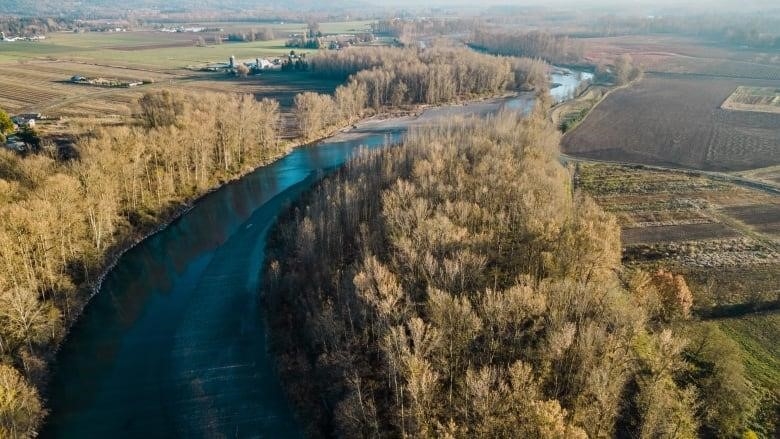
Last month, farmers and government officials in Washington state asked the province to look into the high number of bacteria
The province has confirmed that the bad water in the Nooksack River in Washington state comes from more than one source in British Columbia.
This comes a month after farmers and government officials in Washington asked B.C. to look into and deal with the high levels of feces bacteria coming from Canada.
In a letter sent to B.C. Premier David Eby and Washington Gov. Jay Inslee in June, the Whatcom Family Farmers and the North Lynden Watershed Improvement District said that routine water quality testing by Whatcom County and the state’s agriculture department found bacteria at levels over 200 times higher than the water quality standard.
In a statement to CBC News, B.C.’s environment ministry said that there are “multiple sources of poor water quality,” one of which is an Abbotsford compost facility.
The province didn’t answer specific questions about where else the pollution was coming from.
The ministry said that it is reviewing permits for discharge limits for different operations in that watershed. This includes the compost facility, which is called The Answer Garden Products and is owned by Consolidated Envirowaste Industries Inc.
The statement said, “We are working with [Consolidated Envirowaste], and they have appealed their discharge requirements.”
The Environmental Appeal Board of B.C. confirmed that the facility is appealing, and an April 2024 hearing is set.
Consolidated Envirowaste wouldn’t talk to CBC News about the situation.
‘Monitor and address
In its statement, the province said that it is working with a number of groups to solve the problem.
“It is important to note that the bad water quality in the Nooksack tributaries could come from more than one place,” the report said. “We continue to work with state and federal U.S. agencies to monitor and fix the water quality in these shared waterways.”
Fred Likkel, the head of a group that helps farmers called Whatcom Family Farms, told CBC News in June that he thought the bacteria was caused by dumping upstream.
“This is something I’ve done for 25 years.He said at the time, “Counts that high mean that sewage or manure is going straight into the stream.”
Erika Douglas from Whatcom County’s natural resources division said that since May, water samples near the border have shown “much lower” levels of fecal bacteria. She said, though, that higher levels of bacteria are usually only seen in late fall and winter.
Douglas said, “We will keep working with B.C. partners on response systems if we see more acute discharges during the next wet season.”
Scarlet Tang from Washington’s Department of Ecology said that they are in touch with British Columbia’s Environment Ministry, but they haven’t gotten any information about specific sources of pollution.
